This exclusive story is brought to you by In Real Life Malaysia – For sharing, please credit us and add a backlink. We value your kind acknowledgement of our editors in sourcing and conducting interviews.
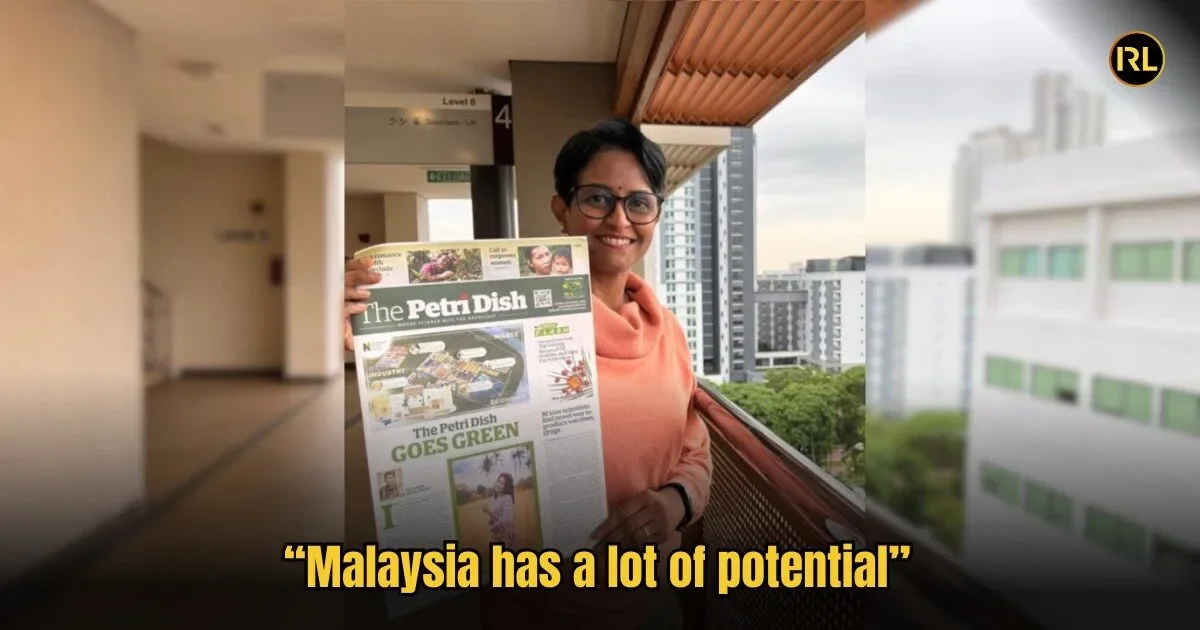
In this story, Dr. Mahaletchumy Arujanan shares how she started science newspaper The Petri Dish, and why science literacy is vitally important for the future of Malaysia.
A good 30% of STEM graduates in Malaysia are working in jobs that don’t use their fullest potential, such as this chemistry graduate who now works as a fried squid vendor.
This mismatch between Malaysia’s fresh graduates’ skillset and the lack of relevant jobs is an issue that directly results in brain drain in the country, as our top talent seek out better opportunities abroad.
But for Dr. Mahaletchumy, the solution is to match scientists and researchers with entrepreneurs and investors, a move which her publication, the Petri Dish, helps facilitate. In Real Life reached out to her recently to share her insights into the current state of the local biotech industry, and what can be done to develop Malaysia’s untapped potential in this sector.
IRL: Can you give us a brief introduction to the Petri Dish?
Dr. Maha: The Petri Dish is a science newspaper dedicated to informing the public about the latest developments in science and technology and connecting potential breakthroughs to entrepreneurs and businesses in Malaysia.
We cover a wide range of topics: Climate change, energy, agriculture, AI, biotechnology and we also interview startups and researchers to bring their work into the spotlight.
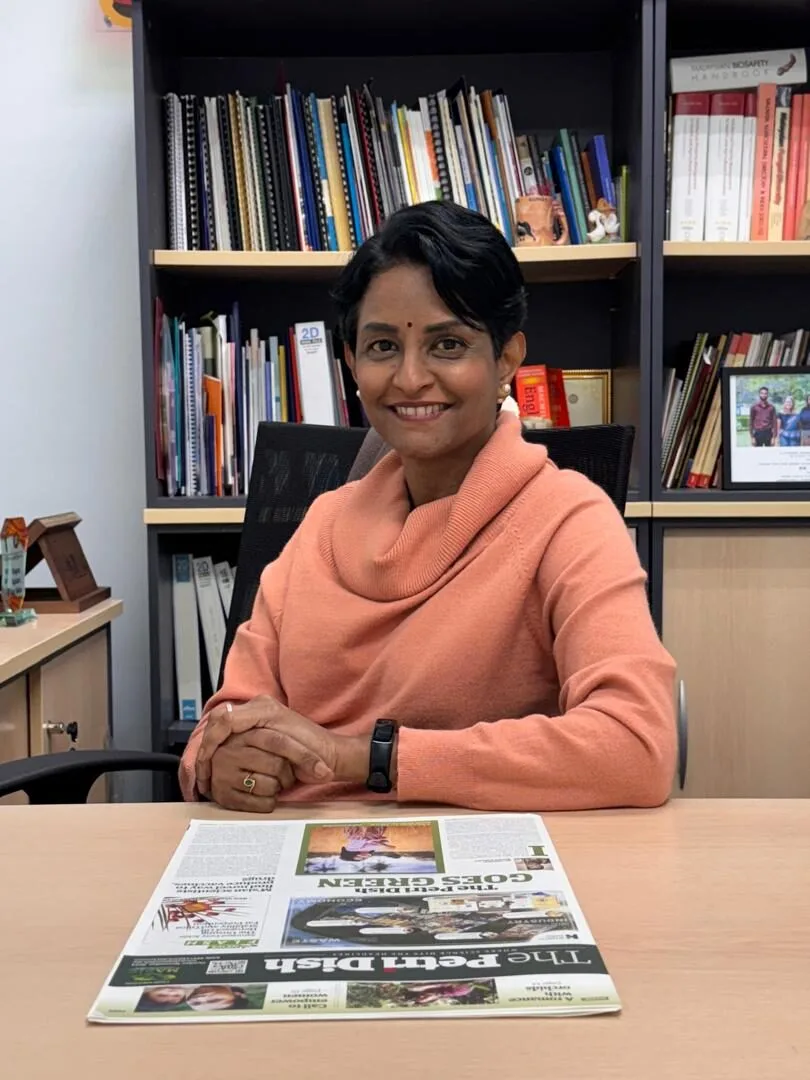
Dr Mahaletchumy Arujanan. Image via In Real Life Malaysia
IRL: Why did you start The Petri Dish, especially when print media seemed to be going extinct?
Dr. Maha: I joined MABIC—Malaysian Biotechnology Information Centre—in 2003 as a project officer. Our parent institute, ISAAA (International Service for the Acquisition of Agri-biotech Applications), supported about 13 to 20 such centers in developing countries like Egypt, the Philippines, Vietnam, and Thailand.
At the time, no one really knew who we were or what we did. When international funding declined, many of these centres shut down, and MABIC was the only one that survived. I realized that we couldn’t operate like a typical NGO, always waiting for grants or support.
So I changed our approach: Instead of functioning like a typical non-profit, I began to shift our model toward something more like a social enterprise. That’s when I proposed starting The Petri Dish as another income stream that helps us sustain our work. It’s not easy—getting funding is hard. Sometimes we just break even, but we’ve kept going for the last 14 years.

Malaysian Biotechnology Information Centre. Image via In Real Life Malaysia
More importantly, The Petri Dish became a platform to communicate science to the public, to policymakers, to industry players—all the people who should understand science but often don’t have the access or time to dig into it.
IRL: What are some interesting features you ran in the past year?
Dr. Maha: We did a six-issue collaboration with PT Bio, a Japanese company specializing in gene editing and genomic research. They have a base in Cyberjaya now.
A couple of years ago, we worked with Environment Defense Fund, a not-for-profit based in the USA who focused on methane mitigation in oil and gas. We interviewed scientists, industry leaders, and raised awareness about methane’s role in climate change.
Palm oil was another big one. There’s a lot of misinformation about it. We did monthly infographics to demystify lipid chemistry, explaining that high saturated fat doesn’t necessarily mean high cholesterol. We even ran a cooking show to make it engaging. The goal was to shift perceptions through science. This was done for the Malaysian Palm Oil Council.
We also highlighted tech-ready products from universities through our Marketplace section. That helped SMEs and startups discover innovations they could license or collaborate on. In fact, two companies featured on the same page ended up partnering after the issue came out.
IRL: What is the general level of science literacy in Malaysia?
Dr. Maha: Science literacy in Malaysia is quite low, which is why platforms like Petrosains and science communication efforts are crucial. Low science literacy leads to poor policy decisions at the top and a lack of interest in STEM fields among students at the bottom; and many other issues in between.
Students aren’t inspired, the teaching methods are outdated, and teachers still rely on 20-year-old curricula. This gap prevents students from connecting with emerging technologies, which they’ll eventually have to work with. This lack of awareness also affects Malaysia’s progress in innovation and its attractiveness to international investors.
For the general public, there’s a fear of new technology—people avoid things like nuclear technology or genetically modified foods due to safety concerns, even when the science says otherwise. These are the consequences of low science literacy across stakeholders, and that’s what we’re trying to address.
IRL: How does reading The Petri Dish help students and parents learn about STEM career opportunities?
Dr. Maha: If parents start reading it, it becomes co-learning. Science isn’t just for the teacher to know more, or the parent to know more—because science is advancing so rapidly that no one can claim to know everything. So if parents and teachers read The Petri Dish with their children, they can sit and learn together. They can say, “I don’t know either, let’s look it up.”
That’s how we create a culture of science at home. Instead of everyone being on their own screens, they can sit down, read something about science, discuss, even research more online. We need to normalize that. Because when science becomes part of home conversations—about food, health, environment—then people start making informed decisions.
And when children see all the different areas featured in The Petri Dish—biotech, AI, quantum physics, clinical trials—they get exposed to career pathways they never knew existed. So when it comes time to choose a field, parents aren’t left guessing.
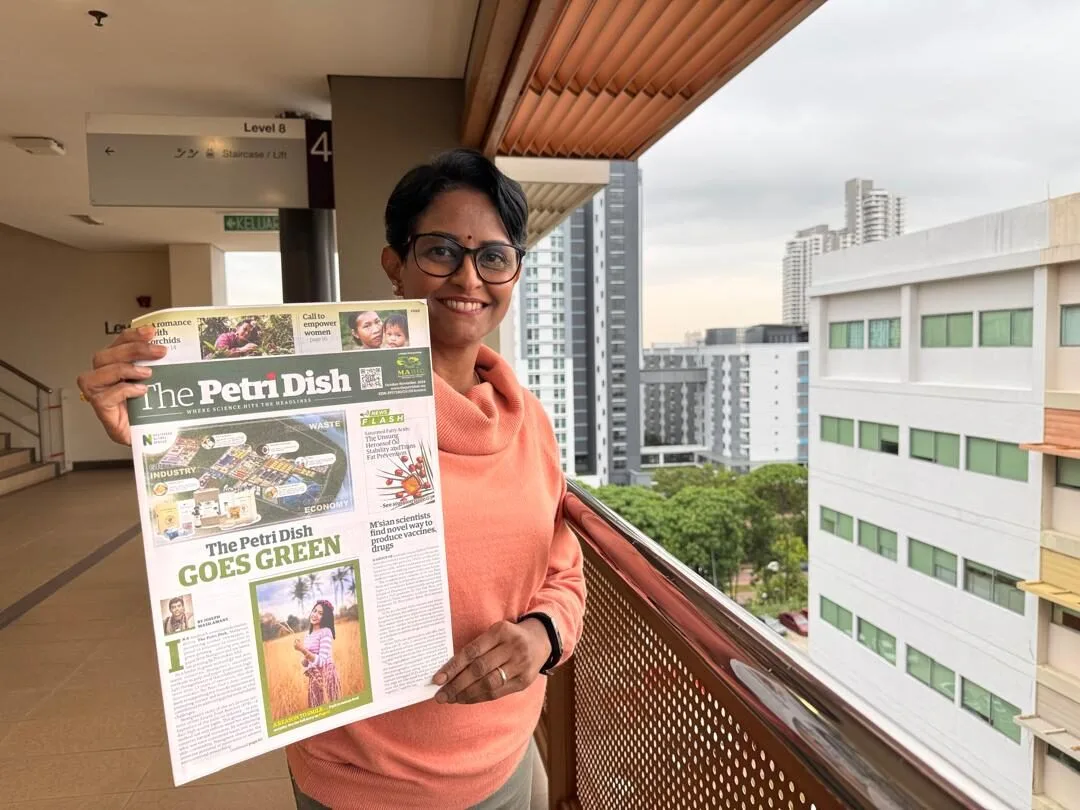
Image via In Real Life Malaysia
IRL: How does The Petri Dish support the government in implementing their policies?
Dr. Maha: The government is serious about making Malaysia a science-based, knowledge-based economy. But of course, it’s not easy—there are gaps. Implementation is weak, some policies can be stifling, and public awareness and literacy are lacking. So, as a not-for-profit, we support the government’s efforts.
Over the years, we’ve aligned with several government initiatives. For example, we strongly supported the National Biotechnology Policy in 2005. Back then, we worked closely with BiotechCorp, now called Bioeconomy Corporation. I used to join them as part of the Malaysian delegation to Bio US to support the national agenda and attract investors and companies to Malaysia. We featured them in our publications as well.
When that policy ended around 2020, the government introduced the National Biotechnology Policy 2.0, and I was part of the task force involved in evaluating and refining it. There was a realization that Malaysia needed to be self-reliant in that area. So we contributed to making sure that the roadmap was practical, not just a bunch of ideas on paper.
I’ve also worked with the Ministry of Education, doing roadshows to enhance science pedagogy among teachers, making biology and biotechnology more engaging in classrooms. Another big one was the Malaysian Biosafety Act, which monitors and regulates genetically modified organisms and now includes gene editing. Between 2005-2010, I was actively advocating for a science-based biosafety framework.
IRL: What kinds of challenges do you face when trying to get these policies to work or be understood by others?
Dr. Maha: It’s not always about people not understanding science. Each stakeholder has different concerns, so science communicators need to tailor our messaging. One-size-fits-all doesn’t work.
For example, in the Ministry of Education, the question is: How do we train teachers to inspire students, rather than just push them to study for exams? How do we spark genuine interest in STEM, so students find it fascinating and see a future in it?
With regulators, they tend to be extremely risk-averse. Even a small risk will prompt them to say, “Let’s not do it; let’s wait and see what other countries do first.” It’s always a fine line between being too relaxed and being too stringent. How do we tailor-make science-based regulations that ensure safety while still allowing innovation?
Often, this means we don’t take a leadership role in research & development—we wait for other countries to approve something, and only then do we follow. That’s why Singapore is often the first: they approved lab-grown chicken, insect proteins, and gene editing before anyone else.
Regulators aren’t the only ones. Investors are also risk-averse.They hesitate to put in money if results take too long or they’re unsure the technology will work. Part of it is that they don’t always trust our homegrown Malaysian scientists. They prefer scientists from other countries.
IRL: Why do regulators and investors here trust foreign scientists more than our own?
Dr. Maha: When we compare Malaysia’s research and development with countries like Singapore or Japan, we see they carry more prestige. People trust that they know what they’re doing because they’re at the forefront of the field.
That means unless Malaysia takes a more leadership role in pushing the boundaries of science, we will never advance to high-tech solutions or innovations that can be commercialized quickly. These are the real issues.
Additionally, many regulators are influenced by environmentalists and anti-GMO activists. They say, “This might destroy biodiversity,” or, “What if it mutates?”
So instead of relying on the science, the regulators try to play it safe. They don’t want to be the ones who approve something if it goes wrong. So they go for low-hanging fruit—easy, safe technologies.
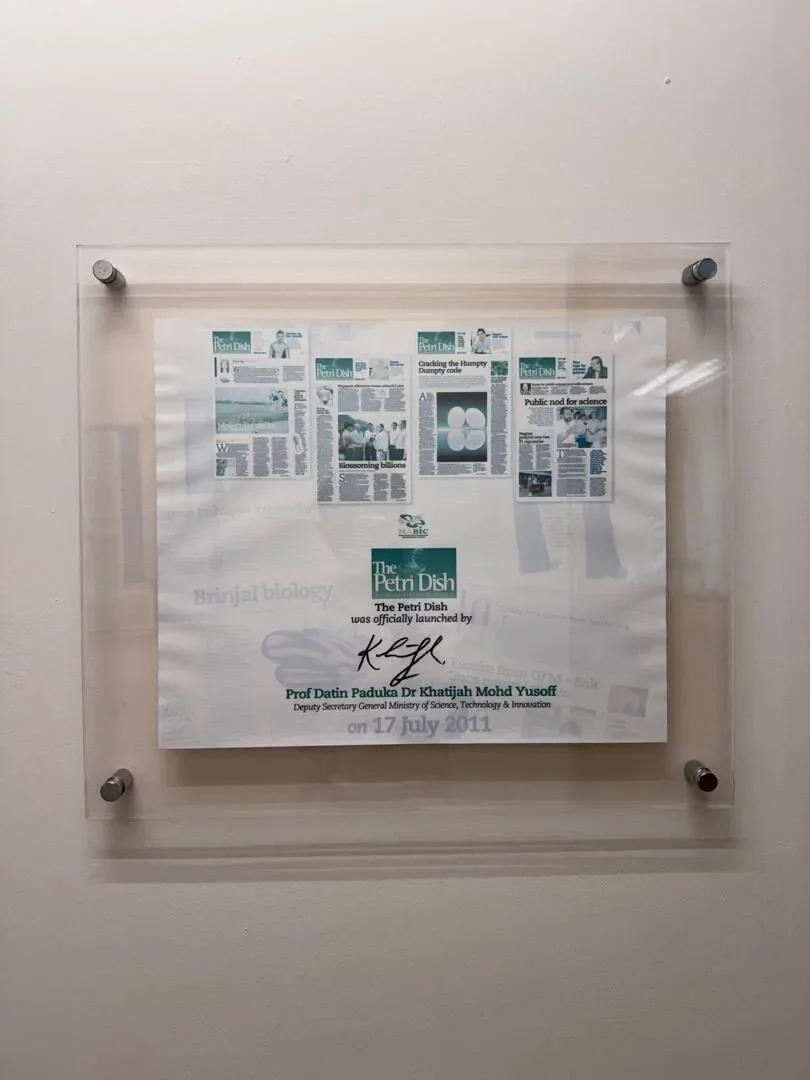
Image via In Real Life Malaysia
IRL: Can Malaysia really compete with places like Singapore or Japan in science and tech?
Dr. Maha: We could, but not with our current system. Singapore, for instance, imports talent—mainly Malaysians—and brings in top-tier experts like Nobel laureates from all over the world to set up research centers for them. That takes money, yes, but it also takes vision.
Pharmaceutical companies in Singapore conduct research, while in Malaysia, they mostly focus on distribution. So what are our science graduates supposed to do? They often end up in marketing or sales, not research. It’s not just fresh graduates who leave—senior people leave too.
Another example is China—they used to just copy technology, but now they’re leading in innovation. So it comes down to funding and how we nurture our talent. How can we provide opportunities for brilliant minds and keep them here?
IRL: What kind of culture would attract and retain STEM talent?
Dr. Maha: Scientists aren’t just supposed to do work in the lab. For science to make it to your dining table, farms, companies, or into technology, there are many gaps in the value chain that depend on policies, regulations, funding mechanisms, talent development, institutional support, and public understanding of science.
Policymakers talk about stopping Malaysia’s “brain drain,” but it’s not just about offering better salaries. Often, policy-making itself isn’t transparent. They call a group of people to consult, and if someone disagrees, they’re left out of the next meeting. Sometimes stakeholders are only brought in after everything is finalized, just to endorse it publicly, making it look like everyone agrees when they don’t.
Take the Biosafety Act, for example: its implementation can be so stringent that it prevents scientists from working on genetically modified crops. Much needs to be improved on the timeline and risk-averse procedures that ask too much information that does not translate into safety?
When we bring back Malaysian talent from overseas, they struggle to work in this culture. Scientists need to speak up—what’s not working, what can be improved. But many are afraid of saying the wrong thing, not because they’re bad communicators, but because they fear the ministry will accuse them of criticizing policies or regulations.
We have the talent, we have the brains, but when there’s no freedom to speak, even offering more money won’t bring people back. It creates a mentality where people don’t feel safe expressing themselves, and that stifles creativity.
Policies and regulations must involve real consultation and transparency. Disagreements should be acknowledged and addressed. It takes a shift in our mentality and a collective change in attitude.
IRL: In the early 2000s, the government said there would be 200,000 biotech jobs. Why didn’t that happen?
Dr. Maha: Yes, in 2005, when the National Biotech Policy was launched, there was a big promise—200,000 jobs, a booming biotech sector. Many students got excited. Parents encouraged their kids to go into bio-based degrees.
But what happened is, the industry didn’t grow in tandem with global developments. We trained a lot of talent, but our ecosystem couldn’t absorb them. There weren’t enough high-tech companies doing R&D or advanced manufacturing.
So many ended up doing unrelated jobs like marketing or sales. It wasn’t a lack of interest or brains—we just didn’t grow the industry around them. And our local companies still mostly distribute pharma products; they don’t develop them. We have the talent, but without a thriving industry, it doesn’t translate into meaningful jobs.
IRL: What potential does Malaysia still have in biosciences, agriculture, and pharmaceuticals?
Dr. Maha: Malaysia has a lot of potential in all these areas and we have some excellent companies too. Palm oil has always been our strength, but we shouldn’t stop there. We should be working on rice, vegetables, fruits and flowers—especially because our food import bill is so high. We need new varieties of crops, better fertilizers, and stronger local agri-tech capabilities.
For pharma, we mostly do distribution now, but if we invest properly and create supportive policies, we could grow our own pharmaceutical and medical and nutriceutical R&D. Biosciences can contribute so much, but it all hinges on whether we build the ecosystem properly.
Malaysia has traditionally relied on being a low-cost option, which is no longer a viable marketing strategy. Instead of positioning ourselves as cheap, we should highlight our high-tech capabilities. We have a lot of promising technologies in our universities that can be translated into industry, and it’s important to showcase that potential.
The problem is, while global biotech is growing fast, our local industry isn’t keeping pace. We have the talent, but the industry isn’t big enough to absorb them. So we must build the ecosystem from the ground up—startups, regulations, funding mechanisms, public awareness.
IRL: You’ve said Malaysia has a tendency to “stop at proof of concept.” What does that mean, and how can we go further toward commercialization?
Dr. Maha: Yes, that’s a big issue. We’ll fund research until the proof of concept, and then we stop. That’s not enough. Proof of concept just means something works in principle. From there, it has to go through a development cycle, validation, regulatory approvals, market testing, and scaling up.
That’s where the investment really matters. We need a clear pipeline that helps projects move from idea to product. The process takes time—10 to 15 years for something like pharmaceuticals and biotechnology.
Even something simpler like a health supplement or fertilizer needs investment, testing, branding. That’s why communication, investor buy-in, and government consistency are so important.
There are support systems. MOSTI has programs. MRANTI helps startups. MTDC connects researchers with entrepreneurs. If someone finds a product they believe in, there are pathways to bring it to market. But they need to be persistent.
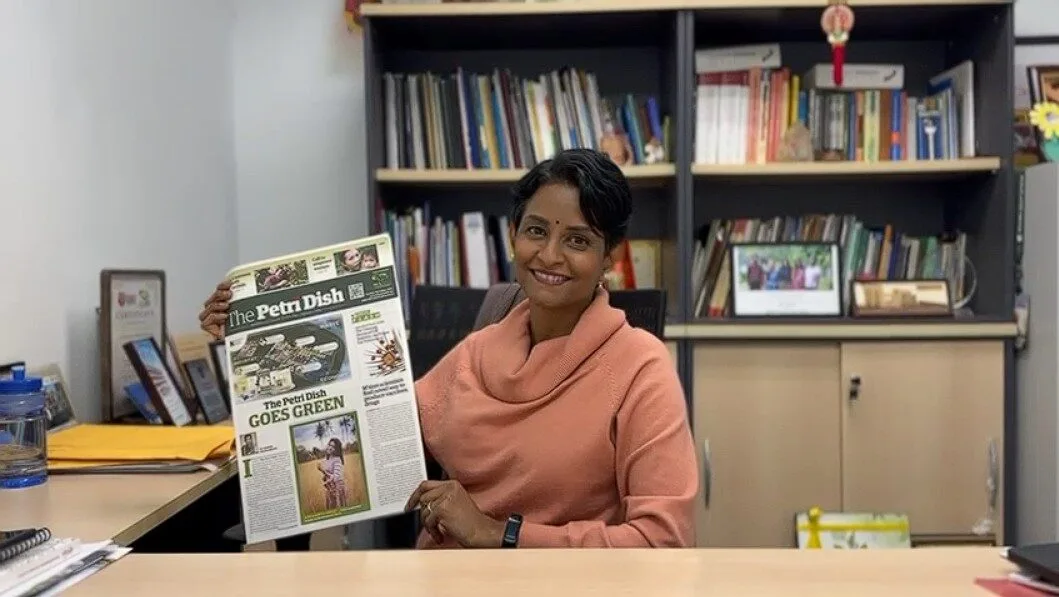
Image via In Real Life Malaysia
IRL: Why do so many projects get cancelled halfway—even if they’re promising?
Dr. Maha: That’s one of the saddest things. Many promising projects get shelved halfway because of change of policies and priorities; or when funding stops.
It’s not just about changing priorities. Sometimes, it’s the overly stringent regulations that demotivate scientists. For example, enforcement officers may demand that genetically modified bacteria should not be stored in the same chiller as other organisms. This would mean procurement for a separate chiller for GMOs. That sounds small, but when procurement is slow and funding is tight, these things become project killers. There are many other requirements that are not science-based that puts scientists off.
IRL: How do we get more of our patents commercialized?
Dr. Maha: We need better visibility. Many patents expire before they can be commercialized because nobody knows about them. One idea is to publish high-potential patents in The Petri Dish and distribute it through our embassies overseas and at expos. That way, international investors can discover Malaysian innovations. But it’s hard to get agencies to commit to this kind of collaboration.
IRL: Any final thoughts?
Dr. Maha: Malaysia has a lot of potential. The talent is here. But the whole ecosystem has to work together—policy, education, investment, regulation, and public understanding. The Petri Dish is just one piece of that puzzle, but it can be a powerful one if used properly.
Have a story to share?
Submit your story to ym.efillaerni@olleh and you may be featured on In Real Life Malaysia.
Read also: I Earn RM15,000 Monthly as a Designer After Teachers Said I’d Have No Future – In Real Life
I Earn RM15,000 Monthly as a Designer After Teachers Said I’d Have No Future












